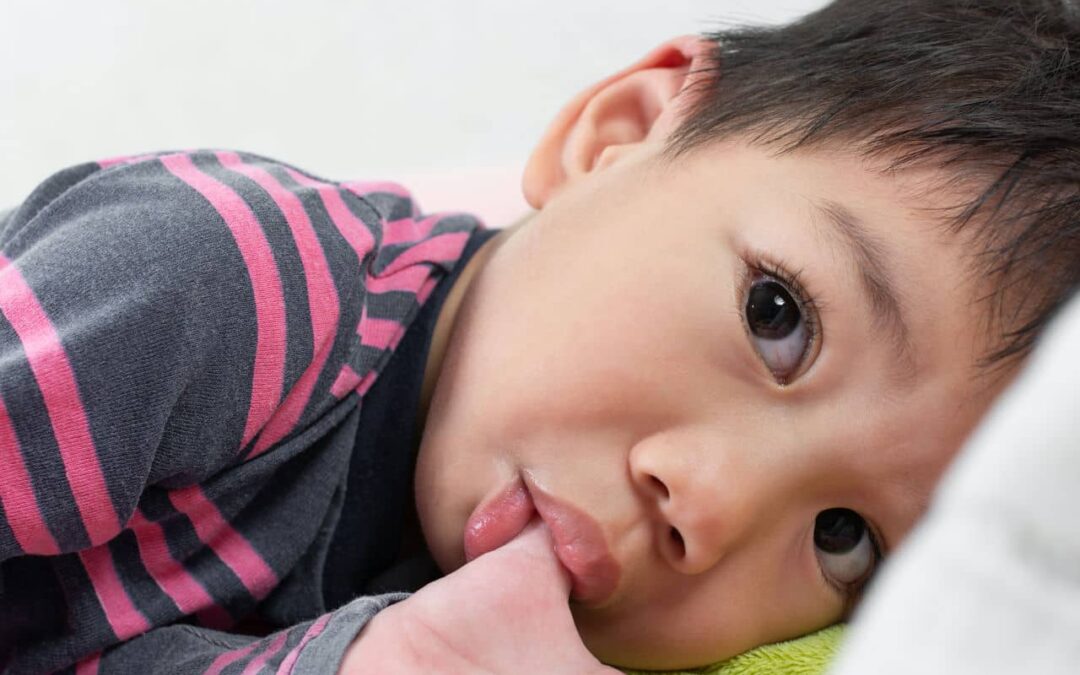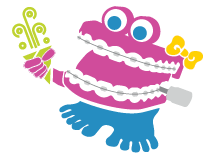Thumb-sucking and pacifier use are common self-soothing habits for infants and toddlers. These actions often help children feel safe, comforted, and ready for sleep. While they are considered completely normal in the first few years of life, parents often worry about the long-term impact these habits may have on their child’s teeth, jaw, and speech development. Understanding when the habit is harmless and when it becomes a concern is the key to supporting healthy oral growth.
Why Do Children Suck Their Thumbs or Use Pacifiers?
Babies are born with a natural sucking reflex, which is why thumb-sucking and pacifier use are so common. This reflex helps babies feel secure, reduces stress, and can even make it easier for them to fall asleep. For most children, these habits fade naturally by age 2 to 4. However, when the habit continues beyond these early years, it may start to affect oral health.
Dr. Kimberly encourages families to bring their child for a first visit by age one. We offer free checkups for children under 2 to start keeping an eye on early development as well as begin to help them feel comfortable visiting the dentist.
When Is It a Problem?
If a child continues to suck their thumb or use a pacifier past age 3 or 4, parents should pay close attention to their oral development. At this point, prolonged sucking can begin to affect how teeth and jaws grow. Common problems include open bite, where the front teeth do not meet properly, or an overbite, where the upper teeth push forward. The pressure can also narrow the roof of the mouth, cause changes in jaw alignment, and lead to mispronunciation or speech delays. While these changes may seem minor at first, they often require professional care later.
Learn more from orthodontist Dr. Caylin, DMD, MDS about the common indications for early phase treatment
Thumb-Sucking vs. Pacifier Use: What’s the Difference?
Both habits have the potential to affect teeth, but they are not equal in terms of management. Pacifiers are easier for parents to control since they can be limited to certain times of day or removed altogether. Thumb-sucking, on the other hand, is harder to stop because children always have access to their thumbs. For some families, transitioning a thumb-sucker to a pacifier can be a helpful first step before beginning the weaning process. While pacifiers can also affect oral development if used too long, it is usually much easier to end pacifier use than to stop thumb-sucking. Parents often find that the short-term struggle of pacifier weaning is much more manageable than the long-term costs of orthodontic treatment.

Long-Term Impact: Braces and Habit Appliances
When thumb-sucking continues beyond pre-school age, the likelihood of needing early phase orthodontic treatment increases. Children may require braces earlier than usual or need a special device called a habit appliance. This appliance is fitted inside the mouth and discourages thumb-sucking by making the action less comfortable or even possible. While effective, these treatments can be costly and stressful for children. Breaking the habit earlier not only prevents these interventions but also supports natural, healthy development of the teeth and jaws. Visit our orthodontic care page to see how we help guide healthy growth.
Tips to Help Your Child Stop the Habit
Helping a child move past thumb-sucking or pacifier use takes patience and consistency. Begin gently weaning from the habit around age 2, when most children are capable of finding other sources of comfort. Offer alternatives such as soft toys, blankets, or calming bedtime routines. For older toddlers, reward systems like sticker charts can encourage progress. Staying positive is crucial—avoid punishing or scolding, as this can cause stress and make the habit harder to break. In some cases, thumb guards or pediatric-approved bitter-tasting nail solutions may help, but it is best to discuss these with your child’s dentist first.

How Palmetto Kids Dentistry Can Help
At Palmetto Kids General Dentistry and Orthodontics, we understand how challenging it can be to break a long-standing habit. Our team works with families to create a supportive plan that fits each child’s needs. During checkups, we closely monitor bite development and can identify early signs of changes in jaw growth or tooth alignment. If intervention is needed, we provide orthodontic options such as braces or habit appliances. Our kid-friendly environment and focus on gentle guidance make the process easier for both children and parents.
FAQ: Thumb-Sucking and Pacifier Use
Q: When should my child stop using a pacifier?
A: Begin weaning around age 2 and aim to stop completely by age 3.
Q: Is thumb-sucking more harmful than pacifier use?
A: Yes. Thumb-sucking is harder to control and often leads to more serious dental issues if it continues past age 4.
Q: Can I switch my child from thumb-sucking to a pacifier first?
A: Yes. This can be a helpful first step since pacifiers are easier to manage and remove.
Q: What happens if my child keeps sucking their thumb after age 4?
A: They may require early orthodontic care, including braces or a habit appliance to prevent further bite issues.
Q: Is it worth the struggle to wean off the pacifier?
A: Absolutely. It’s often much less expensive and easier than correcting problems later with braces.
Q: How do I know if the habit is affecting my child’s teeth?
A: Your dentist can check for bite changes or palate narrowing during a routine exam. Visible signs include gaps, open bite, or a forward-pushed front tooth.
Final Thoughts
Thumb-sucking and pacifier use are natural parts of early childhood. For most children, these habits fade on their own, but when they persist, they can affect oral health. By staying aware of your child’s development and seeking support when needed, you can protect their smile and prevent bigger challenges down the road. If you have concerns or want help creating a plan, schedule a visit with our friendly team at Palmetto Kids Dentistry.


